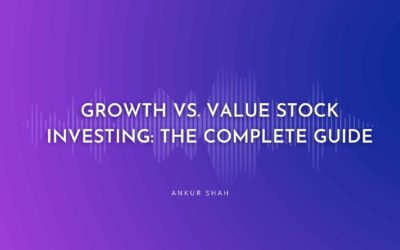Stock Valuation Methods: A Comprehensive Guide
Stock valuation refers to the process of determining the intrinsic value or fair value of a company’s shares.
Assessing the value of shares is crucial for investors as it helps them determine whether a share is overvalued, undervalued, or fairly priced.
Having an accurate estimate of a stock’s worth can guide investment decisions and strategy.
The main goals of valuation are to:
- Estimate a stock’s intrinsic value based on fundamentals
- Determine if a share is mispriced in the market
- Decide whether to buy, sell, or hold a particular stock
- Enable comparison between share to pick the best investments
- Establish price targets for trading purposes
Conducting valuation provides several key benefits for investors:
- Helps avoid overpaying for a stock
- Identifies potential bargains and undervalued stocks
- Allows setting a margin of safety for purchases
- Provides an analytical basis for investment, not just speculation
- Enables performance measurement against a benchmark
Consistent Compounding – Screening for warren buffet stocks
There are two main frameworks for conducting stock valuation:
Absolute Valuation –
Estimates the intrinsic value of a stock based on fundamentals like earnings, cash flows, assets, and business outlook. Examples include discounted cash flow (DCF) and dividend discount models.
Relative Valuation –
Compares the value of a stock to industry peers based on valuation ratios like P/E, P/B, P/S. Determines if a share is under or overvalued relative to comparable companies.
Both absolute and relative valuation offer useful insights for stock analysis. Investors generally use a combination of models from both frameworks to get a complete picture of a stock’s estimated value.
Absolute Valuation Models
Discounted Cash Flow (DCF)
The discounted cash flow (DCF) model is a method of valuing a stock based on its estimated future cash flows. DCF analysis projects the company’s free cash flows into the future and discounts them back to the present using the weighted average cost of capital (WACC) as the discount rate. This determines the net present value, which indicates the stock’s current intrinsic value.
DCF valuation is best used for mature, stable companies with predictable cash flows rather than high-growth stocks. It works well for valuing companies with cash flows tied to long-term contracts or assets like manufacturers, utilities, and real estate. DCF can also value cyclical companies entering periods of normalized cash flows.
The DCF formula is:
Stock Value = ∑ CFt / (1 + WACC)^t
Where:
CFt = Free cash flow in period t
WACC = Weighted average cost of capital
t = Number of time periods
Consistent Compounding – The Day that saved my career
To perform DCF analysis:
- Forecast free cash flows for the explicit forecast period (typically 5-10 years)
- Calculate terminal value after the forecast period using a perpetuity growth approach
- Determine appropriate discount rate based on WACC
- Discount yearly cash flows and terminal value to today’s value
- Add discounted cash flows to get intrinsic value
Pros of DCF Valuation
- Calculates intrinsic value based on fundamentals
- Better suits mature, stable cash flows
- Bypasses accounting distortions
- Allows detailed scenario analysis
Cons of DCF Valuation
- Highly dependent on assumptions and estimates
- Less accurate for variable or cyclical cash flows
- Complex and requires financial modeling skills
- Difficult to forecast cash flows far into future
By directly valuing future cash generation, DCF analysis provides a detailed analytical approach. However, its accuracy hinges on the quality of cash flow projections and choice of discount rate and terminal growth. DCF should be used as part of an overall multi-faceted valuation.
Dividend Discount Model (DDM)
The dividend discount model (DDM) is a valuation method that calculates a stock’s intrinsic value based on its projected future dividend payments. The key assumption is that the primary driver of a stock’s value is the dividends received by shareholders.
DDM is best suited for mature, established companies with a consistent history of paying dividends. Examples include utilities, consumer staples, telecoms, and industrial firms. DDM works for companies expected to maintain dividend payouts and moderate growth.
The Gordon Growth Model is a simple version of DDM assuming dividends will grow at a constant rate indefinitely. The formula is:
Value = D1 / (r – g)
Where:
D1 = Next year’s expected dividend
r = Required rate of return
g = Constant growth rate
The general dividend discount model formula is:
Value = ∑ Div / (1 + r)^t
Where:
Div = Expected dividends
r = Required rate of return
t = Years into future
Check out – How does stock market work
Example DDM Calculation
Company A pays $2 annual dividend.
Growth rate expected at 5% perpetually.
Required return is 8%.
Value = $2 / (0.08 – 0.05) = $50
Pros of DDM
- Suits companies focused on dividends
- Easy to understand and apply
- Directly values shareholder payments
Cons of DDM
- Limited to high-payout dividend stocks
- Hard to predict dividend growth
- Does not account for reinvestment and ROE
DDM provides a straightforward approach for dividend-paying stocks. But it relies heavily on estimated dividend growth rates. DDM works best when used in conjunction with other valuation techniques.
Relative Valuation Models
Price-to-Earnings Ratio (P/E)
The price-to-earnings ratio (P/E) is a valuation metric that compares a company’s current share price to its earnings per share (EPS). It provides a sense of how much investors are willing to pay for each dollar of the company’s earnings.
Know more – How to use Stock Screener
P/E Calculation:
P/E Ratio = Share Price / Earnings Per Share
Types of P/E Ratios
- Trailing P/E – Based on last 12 months of actual EPS
- Forward P/E – Based on projected future EPS, typically for next 12 months
Interpreting P/E
- Higher P/E suggests investors expect faster growth
- Lower P/E indicates undervalued or slower growth
- Average market P/E is around 15-17x
Factors Impacting Ideal P/E
- Growth rates – High growth warrants higher P/E
- Business consistency – Stable firms merit higher P/E
- Competitive advantage – Wider moats support higher P/E
- Macro conditions – Low interest rates allow higher P/E
Pros of P/E Valuation
- Simple and easy to use
- Captures market sentiment and expectations
- Useful for relative comparison
Cons of P/E Valuation
- Prone to market psychology and bias
- Not as directly tied to fundamentals
- Growth assumptions baked in
- Difficult to compare across industries
P/E ratios provide a quick snapshot of how a stock is valued relative to earnings. But growth expectations can distort ratios. P/E has limitations for standalone valuation and should be combined with other techniques.
Price-to-Book Ratio (P/B)
The price-to-book ratio (P/B) compares a company’s market valuation to its book value or net assets. Book value represents the company’s assets minus liabilities. The P/B ratio reveals whether a stock is trading at a premium or discount to its asset backing.
Check out – Electric Vehicle Shares in India
Calculating P/B Ratio
P/B Ratio = Share Price / Book Value per Share
Interpreting P/B
- P/B under 1 indicates undervaluation
- P/B over 3 signals potential overvaluation
- Average P/B for S&P 500 is around 4-5x
Useful Insight from P/B
- Banks and other asset-heavy firms
- Cyclical companies at trough valuations
- Screening for potentially undervalued stocks
Limitations of P/B
- Not as useful for high-growth companies
- Book value is based on historical asset costs
- Intangible assets often excluded from book value
- Difficult comparisons across capital intensive industries
While P/B provides a sense of valuation relative to asset backing, it has limitations. Book value may diverge greatly from current asset market values. Overall, P/B is most useful when combined with other metrics in a holistic valuation.
Comparable Company Analysis
Comparable company analysis, also called relative valuation or peer group valuation, assesses a stock’s value relative to similar companies. It assumes shares within the same industry offer useful comparisons.
Key Ratios Used
- Price/Earnings (P/E)
- Price/Sales (P/S)
- Enterprise Value/EBITDA (EV/EBITDA)
Steps for Analysis
- Identify relevant peer group of companies
- Calculate valuation ratios for peers
- Find averages for peer group
- Compare stock’s ratios to peer averages
- Determine if stock is potentially over or undervalued
Benefits
- Accounts for industry and sector context
- May reveal mispricing relative to peers
- Useful when projecting growth rates
Drawbacks
- Influenced by market sentiment
- Not as directly tied to fundamentals
- Quality of peer group affects accuracy
- Industries vary widely in appropriate ratios
Comparable analysis provides a helpful perspective on a stock’s valuation within its industry. But finding valid peers can be challenging. It works best combined with other fundamental valuation techniques to confirm conclusions.
Consistent Compounding – Share Price Always Follows Fundamentals
Additional Valuation Methods
Asset-Based Valuation
- Values a company based on its net asset value (assets – liabilities)
- Often used for asset-heavy industries like mining, oil & gas, real estate
- Relies on accurate estimates of current asset market values
Residual Income Model
- Values a share based on book value plus present value of expected future residual income
- Residual income is profit above cost of capital needed to generate profit
- Suits companies with high return on equity (ROE)
Price-to-Sales Ratio
- Values a share based on sales per share rather than earnings or cash flows
- Often used for early stage companies with minimal or negative earnings
- Varies widely across industries, typically 1-2x is reasonable
Enterprise Value (EV) Multiples
- Ratios like EV/EBITDA and EV/Revenue value a company based on enterprise value, which includes debt
- Used for acquisitions and sum-of-parts analysis
- Accounts for capital structures and indebtedness
Each method has pros and cons and is suited to certain types of companies and scenarios. Prudent valuation involves using a mix of models to offset limitations and biases.
Conclusion and Key Takeaways
There are a variety of valuation models investors can use to estimate the fair value of shares. Key techniques covered include:
- Discounted Cash Flow (DCF)
- Dividend Discount Model (DDM)
- Price-Earnings Ratio (P/E)
- Price-to-Book Ratio (P/B)
- Comparable Company Analysis
- Additional methods like asset-based, residual income, P/S, EV multiples
Each approach has its own strengths and limitations. Using multiple models together provides a more accurate and holistic view of valuation. Investors should customise the methods to suit the unique traits of the company being valued. Valuation is also an ongoing process rather than a one-time event. As markets and company fundamentals evolve, so should valuation estimates.
- The key takeaways for stock valuation best practices are:
- Employ both absolute and relative valuation models
- Tailor models and assumptions to the company
- Use a blend of techniques to offset weaknesses
- Update valuation regularly as conditions change
- Maintain a long-term perspective alongside valuation
With diligent research and valuation analysis, investors can make better-informed decisions and identify potential bargains in the market. Though part art and part science, share valuation remains an indispensable tool for investment success.




